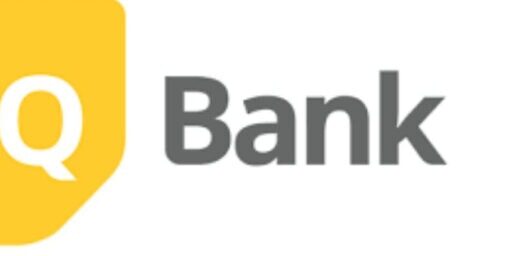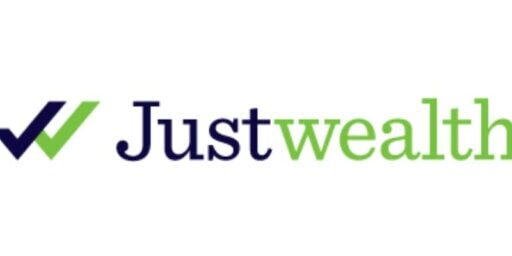Indexed Family Education Fund (RESP) Portfolio Update – 2019 Edition
It has been about a year since my last RESP portfolio update which is probably an appropriate time span since it’s a fairly steady portfolio that is 100% indexed. 2018 was certainly a test for equity portfolios and although stocks were pounded, these indexed RESP accounts performed a little better than I expected.
The RESP portfolios for our children are set up with TD e-Series mutual funds which provide a low-cost way to index the market (some other ways to index your portfolio). We contribute $2,500/account/year to get the maximum contribution from the government of $500/account/year. So basically $5,000 contributed to the two RESP accounts gives us $6,000 annually to invest.
We initially went with index mutual funds instead of index ETFs because of the freedom of adding small amounts at a time without having to pay a commission for every purchase. Since opening the accounts though, there have been some advancements in ETFs and discount stock brokerages (here is an updated comparison).
If I were to set up an RESP account today, it would be tough to choose between this and brokerages that offer no-commission ETFs. If I were forced to choose, I would likely choose the no-commission ETF route, but I’ll stay the course with TD funds for now.
The original plan was to be aggressive for the first 10 years (90% equities 10% bonds) for each child with increasing fixed income as the University tuition nears. I copied the table from my original RESP strategy article below.
I have since adjusted the first 10 years to have close to 75% equities and 25% bonds. I like to keep things simple, and having it set up this way will still provide solid long-term results, while enabling me to keep it simple with 25% in each of Canadian equity, US equity, International equity, and Bonds.
As of today, my oldest child is 10 and my youngest 7. I have started to increase the bond allocation of my oldest child but staying fairly aggressive with the youngest account.
Index 0-10yrs 10-14yrs 14-17yrs 18yrs + Canadian Equity 30%25%20% 10% 0% US Equity 30%25%20% 10% 0% International Equity 30%25%20% 10% 0% Canadian Bonds 10%25%40% 35% 0% GIC’s 0% 0% 35+% 75% Money Market Fund 0% 0% 0% 25%
First (oldest child) RESP Portfolio (started 2nd quarter 2008)
| Investments | Units Held | Price Per Unit | Market Value | % Holdings | Book Value |
| TD CDN Money Mkt | 205.983 | $10.00 | $2,059.83 | 4.19 | $2,059.83 |
| TD CDN Index-e** | 426.039 | $23.48 | $10,003.40 | 20.36 | $9,166.06 |
| TD US Index-e** | 181.619 | $59.47 | $10,800.88 | 21.98 | $6,072.34 |
| TD CDN Bond Index-e** | 1,470.10 | $11.30 | $16,612.13 | 33.80 | $16,987.68 |
| TD Int’l Index-e** | 759.236 | $12.73 | $9,665.07 | 19.67 | $7,567.33 |
| Total as of Jan 01, 2019 | $49,141.31 | $40,509.44 | |||
Second RESP Portfolio (started 3rd quarter 2011)
| Investments | Units Held | Price Per Unit | Market Value | % Holdings | Book Value |
| TD CDN Money Mkt | 156.701 | $10.00 | $1,567.01 | 4.96 | $1,567.01 |
| TD CDN Index-e** | 312.103 | $23.48 | $7,328.18 | 23.20 | $7,554.98 |
| TD US Index-e** | 134.989 | $59.47 | $8,027.80 | 25.41 | $4,950.54 |
| TD CDN Bond Index-e** | 652.665 | $11.30 | $7,375.11 | 23.35 | $7,554.98 |
| TD Int’l Index-e** | 572.583 | $12.73 | $7,288.98 | 23.08 | $5,871.71 |
| Total as of Jan 01, 2019 | $31,587.08 | $26,753.48 | |||
The investment return for both portfolios was fairly close but different enough to show the subtle impacts of asset allocation. I ran the numbers through Excel’s XIRR function (here’s how to use XIRR to calculate investment returns) for the period of January 1, 2018, to December 31, 2018.
Remember how 2018 was not great for investors? The larger portfolio with more bonds returned -1.73% and the other returned -2.53%. I suspect the slightly higher return was due to the higher concentration of bonds through the year. Remember that bonds help smooth out market volatility, but can create a small drag during bull markets. These returns do not count the free $500 CESG contributed to each account.
We started the first portfolio in early 2008 near the peak of the market so there was a point in early 2009 where the market value of this portfolio was significantly below book value. It’s comforting to see that re-balancing with new money every year has brought positive longer-term results. Since inception, this portfolio has returned 6.93% annually.
The second RESP portfolio was started near mid-2011, which fortunately was during a small market correction. Since the last update, I managed to bring the % holdings of each of the mutual funds to “near” target amounts by releasing some of the cash that I have a tendency to hoard. New cash this year (not shown above) was deposited directly into each mutual fund, instead of moving money into the money market prior to re-investing into the funds. Since inception, this portfolio has returned 6.21% annually.
So in conclusion, I find that indexing provides a steady, systematic, and low-stress way of investing. With another 7 years until post-secondary education for my oldest child and 10 years for my youngest, the accounts should have enough to cover most of their undergraduate degrees if they decide to move away from home, and perhaps even pay for a post-graduate degree should they stay home.










Hi,
I use all-in-one ETF and I follow your asset allocation by age
At 10 yo, should I sell everything (all ETF shares) to buy the next one with bonds?
Exemple: Vanguard VGRO to VBAL
Thanks!
Have you heard of RESP Supercharge strategy? Basically you max out RESP with two options at redemption. 1- Cash in unused investments in the childs name and take ownership of it. 2- Transfer unused investments to your RRSP. I have maxed out my RRSP’s and TFSA, so it provides another vehicle to minimize taxes. I realize I would need RRSP room to transfer.
Hi Brent – I haven’t heard of that strategy personally. It’s interesting. I don’t see why it wouldn’t work as long as your child didn’t need all the RESP money to use for their education (in that case – great, you helped them out).
My oldest is 9 and we were planning on changing the asset allocation in his RESP when he turns 10 next January (still have 90% equities/10% bonds). With the stock market crumbling this week, I’m not panicking, but wondering if I should stay the course, even if the markets are (hopefully not) even lower by then?
Great post.
I have a question in regards to moving funds towards GIC’s. My son turns 17 later this month and his RESP portfolio has $70k. The current RESP allocation is all in TD e-Series with 20% equities (TD CND Index-e, TD US Index-e and TD International Index-e) and 80% bonds (TD CND Bond Index-e). This month I would like to start moving funds into Money Market Fund and GICs. While Money Market is pretty straightforward, I am not exactly sure how to incorporate the GIC’s at this stage of the RESP journey. Can you please provide some advice on his? Thanks for the great posts!
One strategy to consider is to build a GIC ladder. If it’s a 4 year program, buy 4 year, 3 year, 2 year, 1 year GICs with enough in each year to support tuition. That way, you get the benefit of higher rates on the longer terms, but liquidity every year to spend on education.
Yes, great post, thanks for sharing.
Can you hold GICs in a TD e-series RESP account?
Thanks
HI MJ
I am new parent and want to open resp for my son. I am confused which funds should i invest in whether td series or buy etfs through questrade. I already have account with questrade. I am thinking of buying one etf vgro or veqt for at least first 10 years. At a same time I am thinking of following your footsteps for investing in td series. Can you please help me out. Thanks
Kanav, you are good either way. However, since you already have accounts with Questrade and willing to buy ETFs, VGRO or VEQT would be more efficient than mutual funds. On that same thought, I would go with XGRO instead of VGRO as it’s slightly more efficient.
I use the e-series as well in my RRSP. Though I would encourage you to consider replacing the money market fund with an investment savings account. TDB8150. Significantly better return, albeit on a very small slice of your portfolio.
Thanks Juan! I use the high-interest investment savings account for my other trading accounts, but didn’t think of it for my TD e-series account. I will look into it!
And a final, minor, nerdy detail: an ISA is insured by the CDIC, a money market fund is not. For whatever that’s worth. :)
I also use the TD e-series in an RESP. I make a point of transferring the amount in the money market fund over to the Canadian bond fund. I’m curious why you don’t do the same? Thanks
Hi Klym,
Lately, I’ve been just depositing money directly into the funds depending on my desired asset allocation. As long as the money gets in there, you are good to go!
I’m looking to transfer RESP money from the CDN money Mkt fund to the TDB8150 as you mentioned above, but i’m not finding it as an option under the RESP e-series. Am I missing something?
FT – did you consider investing in VGRO to simplify the investments in RESP?
Further to this, have you looked at the benefit of moving to questrade for example and going to VGRO/VBAL as needed? Would the savings in MER make enough dent to move the needle?
Hi,
How would you implement separate portfolios using the same funds inside family RESP plan?
For example if ETFs were used I could see using ishares for one child (XIC, XEF, XUS…) and vanguard for another. (VCN, VUN…)
Does TD perhaps provide you with software based logical separation?
Then finally when funds are purchased who actually owns them? (assuming both you and your wife)
Perhaps you can demystify this concept based on how funds are separated and whose names actually show on the fund paperwork to realize to what extent are child portfolios actually separate.
Thank you. Keep up the good work.
Within the TD account, each child has a separate portfolio which is how I can have separate asset allocations. I believe an RESP is a type of in-trust account. I would need to look into who “legally” owns the funds in the case that it would need to unwind today. But generally, if you don’t spend all the funds during post-secondary education years, then all contributions can be withdrawn tax-free, and the remainder can go into your RRSP providing that there is contribution room.
thank you,
I suppose what is still not clear to me is inside a Family Resp plan where everything is shared how does the portfolio separation per child really work?
Unless you have individual resp per child.
It’s not really ‘shared’ during the accumulation phase. Each child has a separate account number. This is mainly for tracking contributions and getting the right amount of CESG since there are yearly and lifetime maxes for both. The benefit is during withdrawals. As long as one of the children is in post secondary, monies can be withdrawn from any of the children’s account.
In the individual account set up, you can only withdraw if that particular kid is in post secondary which really screws things up if that kid doesn’t go.
Thanks Nobleea, your explanation is much more clear than mine. I’m getting to the point where moving to Questrade will make a small difference – stay tuned!
Thank you,
I am talking about QT and there is only 1 family resp account number. As far as I can see there is no way to make purchases for one child or another, just purchase under that 1 family resp account.
I will dig into separation of account for contribution tracking and cesg purposes which make sense and report back.
I am also interested to hear about your findings. Keep us in the loop!
Good afternoon,
Reporting back as promised.
Multiple Portfolios:
Not possible.
The Family RESP is one account with one account number that can have multiple beneficiaries, therefore it is not possible to construct a portfolio inside of this account for each child. (again 1 account number only)
Contributions to the account can always change by allocating percentage between the beneficiaries.
I believe Nobleea mentioned tracking of contributions etc, and this is how it is done by beneficiary name, not by any additional account numbers.
Ownership:
Subscribers own the funds. (e.g. husband+wife)
Children become beneficiaries if you choose to when they are enrolled in post-secondary education
In summary, after looking under the hood of a family resp account structure I don’t see how anyone is able to create a portfolio per child in a single family resp account structure both from the account and ownership perspective.
Stevanj
Out of curiosity, how come you didn’t lump both accounts together and do a family account? Wouldn’t that be more flexible? We have our second coming on the way and I think that is what we plan on doing.
Hi Bryan! Both accounts are lumped into a family account, but they have separate portfolios. I agree that it’s a good idea if you have more than one child.
Great work maximizing your kids RESPs! I use indexing for my TFSA with the same strategy.
Do your kids know about the accounts? I am curious to hear if/when they start to get involved, even on the surface, to start their financial education.
Hi Laura! I’m pretty transparent with the kids regarding finances. I have showed them the statements before, but they have probably forgotten about them by now. :) I talk about investing all the time to them, and the power of compound interest. My 10-year-old is ready to get started now, but needs an income source first. :)